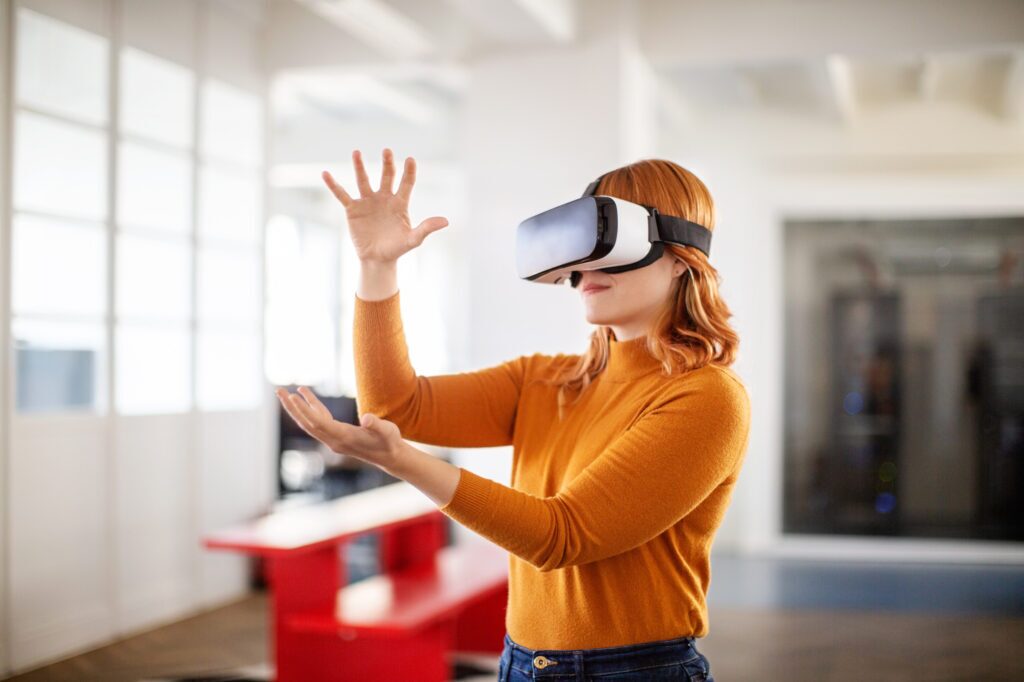3 Ways How VR Can Train the Workforce

Virtual Reality (VR) has captured our imagination since science fiction introduced it in movies such as Tron, The Matrix, and The Lawnmower Man. The possibility of a whole new reality promises infinite entertainment value.
As the technology matures, it also shows immense value in other fields such as the military, commercial sales, and engineering.
A technology that can create any scenario imaginable and enables users to interact with things that exist in a safe virtual scenario offers a lot of promises when it comes to tests, training, and learning. For example, the military can train soldiers on how to respond to dangerous situations without putting their lives at risk.
That is only scratching the tip of the iceberg. Here are three ways how VR can train the workforce.
Gain knowledge and experience in handling volatile situations
The military is not the only industry that poses a risk to its workforce, Others include law enforcement, construction, mining, sports, and even logistics.
It’s easier for people to learn by “doing” immersive exercises. Virtual reality can simulate scenarios without posing a risk to real-life health. It teaches the brain to react faster and make the right choices. Virtual experience can partially replace real-world experience, and as they say, “repetition leads to perfection.”
There are other work-related activities that carry risks to life and limb, such as piloting aircraft or operating heavy equipment. There are also hazardous routine maintenance tasks such as window washing, repairing high voltage wiring, and crowd control during a Black Friday sale.
There are already companies that use VR training to create an immersive training environment for their employees in dealing with different situations without risking the company reputation and the safety of the employees themselves.
They use it in all levels of skill training from corporate onboarding, knowledge review, and critical skills training.
There are also some jobs that deal with hazardous materials. These cover nuclear waste disposal, biological waste disposal, and ordinance manufacturing. There are many other examples, but the industries listed above have almost zero room for mistakes.
A 2018 study from the University of Maryland shows that the immersive experience provided by VR leads to better memory retention. In jobs where there are potential life-threatening risks involved, memorizing all the procedures and safety protocols is an absolute must.
Using VR in human interaction training flattens the learning curve
Certain high-turnover positions in a company need intensive training, experience, and knowledge retention to succeed. These positions include frontline sales, customer service, and public relations.
VR training increases workforce retention by allowing employees to explore and understand the impact of their choices and actions. It can lead them to be more effective in positions that require a lot of latitude and autonomy to succeed.
While choices and mistakes of sales and service personnel may not lead to life-threatening situations like the previous section, it could mean the difference between a happy customer or an irate one. For many businesses, that is a significant factor in corporate success.
In the hospitality industry, VR solutions can enhance the guest experience. People serving in such an industry can use VR technology to train their staff and anticipate their guests’ needs. VR can simulate room maintenance, restaurant management, and a tour of VIP guests.
VR solutions can be used in recruitment to hire the best candidate
According to the book “Who” by Randy Street and Geoff Smart, more than half of business success is about hiring the right person for the right job. A-level players, in their opinion, add value to the business far more than their salaries. In the meantime, employees who are not A-level players cost companies more than just their paycheck.
Companies such as Deutsche Bahn and Actiview use VR to assess and recruit candidates. They use it to test a candidate’s knowledge and behavior. They put this talent in a simulation of the work situation that they will soon face, and assess how they will react or respond to the challenges they encounter.
While VR training can help teach employees problem-solving skills, it can also be used to determine their proficiency level. Knowing a person’s true decision-making abilities past what’s written in their resume and what they say in interviews is an invaluable tool in selecting the right person to join your team.
The hardest part of any recruitment process is not the selection stage, according to Smart. It’s figuring out the truth behind a person’s resume without sounding like a cop.
Using VR technology to assess candidates and how they would respond to typical scenarios encountered by your company will show mindset and behavior. Configured properly, it can also reveal if the candidate is a right fit for your corporate culture.
How VR as a whole can impact your company
The difference between the long-established HR practices and digital technology is that VR can remove the theoretical guesswork from the equation.
By creating controlled simulated scenarios, HR can select the right candidates based on actions they make rather than theoretical measures they say they would do.
Training that’s immersive and gradable is a wonderful employee assessment tool. HR trainers will not need to spend countless hours on a classroom scenario and spend more hours figuring out how much they learned from it.
Through VR, practical training can also be simplified and repeated over and over without wasting resources or putting anyone at risk, even in failure. Candidates will gain more confidence and explore their virtual learning environments, knowing that there is no risk to their safety if they fail. VR allows companies to find and test more creative solutions and improve their protocols—and with it, the workforce performance.